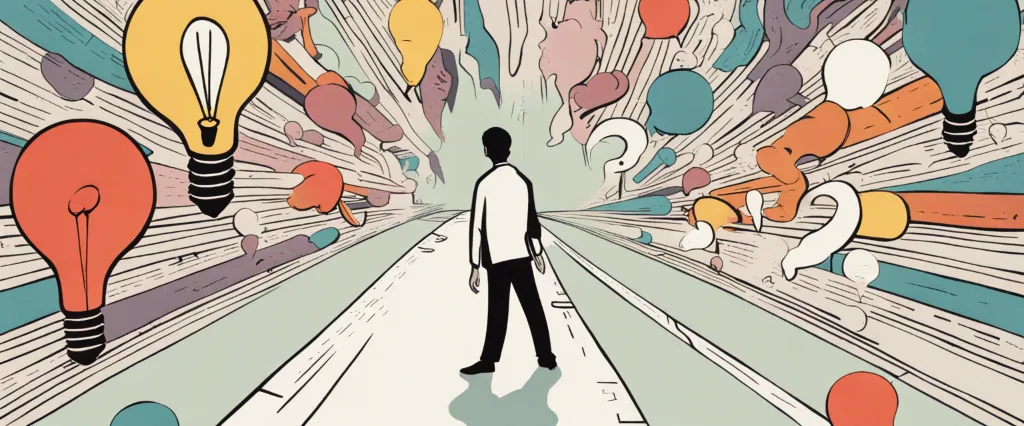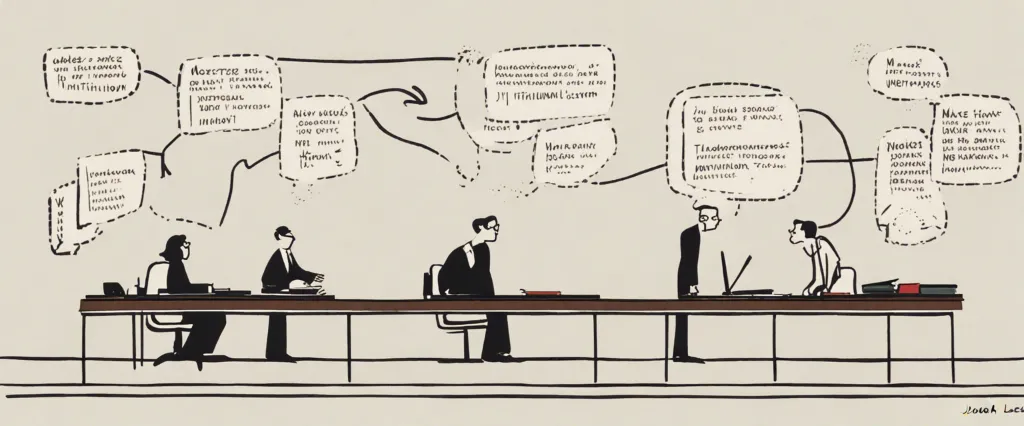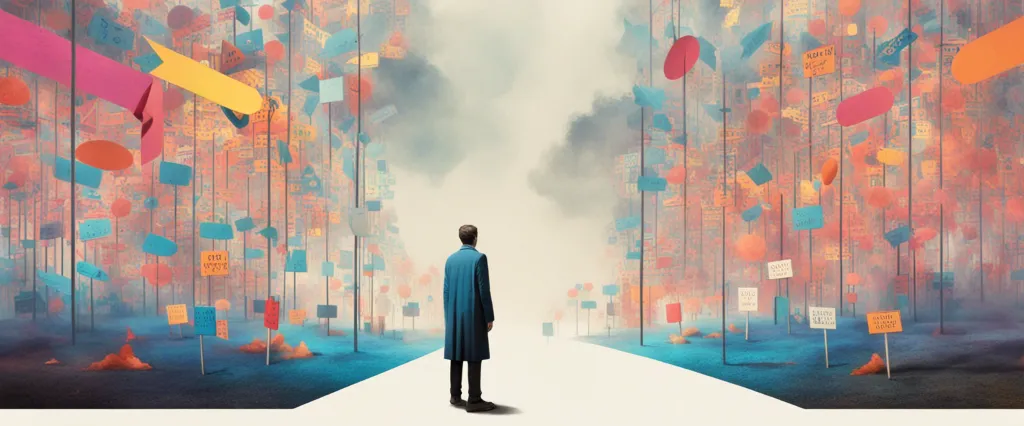
In the realm of science journalism, few names resonate with as much controversy and intrigue as Jonah Lehrer. Known for his thought-provoking and insightful articles, Lehrer had swiftly risen to prominence, captivating readers with his unique style and ability to make complex ideas accessible. However, his skyrocketing career came crashing down when his journalistic ethics were called into question, painting a stark portrait of a talented writer entangled in a web of deceit. Today, we embark on an exploration of Lehrer’s downfall, aiming to shed light on the lessons learned and the ramifications of his actions. Join me as we delve into the world of Jonah Lehrer, a journalist whose rise and fall forces us to confront the boundaries of journalistic integrity and the consequences of crossing them.
Jonah Lehrer is a renowned and accomplished American author, journalist, and speaker. With his thought-provoking insights, deep understanding of human behavior, and meticulous research, Lehrer has captivated audiences and readers around the world. His work primarily focuses on the intersection of science, psychology, and creativity, making complex scientific concepts accessible and engaging for a wide range of audiences.
Born and raised in Los Angeles, Lehrer’s passion for uncovering the mysteries of the human mind became apparent at an early age. He pursued his interests by earning a Bachelor of Arts degree in neuroscience from Columbia University. This educational background laid the foundation for his career as a science writer, allowing him to delve into complex topics with clarity and expertise.
Lehrer’s exceptional ability to distill complex information and present it in an approachable manner has made him a highly sought-after speaker. Whether addressing a room full of scientists, entrepreneurs, or creatives, he has an innate talent for connecting with his audience, blending scientific research with compelling stories and personal anecdotes.
In addition to his popularity as a speaker, Lehrer has authored several critically acclaimed books. His debut work, “Proust Was a Neuroscientist,” challenges the conventional wisdom that art and science are polar opposites, exploring how various artists and writers have unknowingly foreshadowed scientific breakthroughs through their artistry. This book laid the groundwork for Lehrer’s distinctive style, which intertwines creativity, neuroscience, and psychology.
Lehrer continued his successful streak with “How We Decide” and “Imagine: How Creativity Works,” both of which became bestsellers. These books delve into the inner workings of human decision-making and the creative process, unveiling the secrets behind our choices and innovations.
Despite his impressive accomplishments, Lehrer’s career has not been without controversy. In 2012, he faced severe backlash and public scrutiny after it was revealed that he had fabricated quotes and lied about the sources in his book “Imagine.” This incident led to his resignation from The New Yorker magazine and a period of self-reflection.
However, in recent years, Lehrer has demonstrated growth and resilience by openly acknowledging his mistakes, taking responsibility for them, and learning from the experience. He has made a sincere effort to rebuild his credibility and regain the trust of his audience, emphasizing the importance of ethical conduct and transparency in journalism and writing.
Today, Jonah Lehrer continues to contribute to the field of science writing with his captivating storytelling and exploration of the human mind. He remains an influential figure, inspiring readers and listeners to embrace curiosity, challenge assumptions, and unleash their creative potential.
10 Thought-Provoking Questions with Jonah Lehrer
1. Can you provide ten How We Decide by Jonah Lehrer quotes to our readers?
How We Decide quotes as follows:
a) “We are not thinking machines, we are feeling machines that think.”
b) “Our unconscious brain contains a wealth of accumulated knowledge.”
c) “The most reliable and useful insight is often not the first thing that comes to mind.”
d) “The more information we have, the more likely we are to make a good decision.”
e) “Emotions play a vital role in decision-making, sometimes even outweighing rational thought.”
f) “Our decisions are heavily influenced by the context in which we make them.”
g) “We are constantly influenced by biases and cognitive shortcuts, even when we are unaware of them.”
h) “Creating the right environment for decision-making is crucial to making good choices.”
i) “Taking the time to reflect and deliberate can lead to better decision outcomes.”
j) “Our intuition is not always reliable, but it can serve as a valuable guide in certain situations.”
2.What inspired you to write “How We Decide”? Can you share the story behind the book and explain why you felt compelled to explore the topics within it?
I was motivated to write “How We Decide” due to my personal fascination with the intersection of neuroscience and decision-making. The book’s origin lies in a profound experience I had while playing blackjack in Las Vegas. Witnessing my own irrational and impulsive decision-making led me to ponder why our brains often sabotage our best intentions.
This led me on a journey to explore the underlying processes within our minds that govern decision-making. Through extensive research and interviews with leading experts in neuroscience, psychology, and economics, I sought to unravel the intricate workings of our brain as it navigates choices.
I felt compelled to delve into these topics because decision-making is a fundamental aspect of human life, influencing our personal relationships, professional success, and overall well-being. Understanding how and why we make decisions would give us greater control over our lives and help us avoid common cognitive pitfalls.
Ultimately, “How We Decide” aims to provide readers with not just scientific insights, but also practical advice on how to improve decision-making in their own lives.
3.Your book delves into the neuroscience of decision-making and the factors that influence our choices. Can you discuss some of the key insights and discoveries you made while investigating the science of decision-making processes?
In my book, I explore the fascinating field of neuroscience and decision-making, exploring the factors that shape our choices. One key insight I discovered is the profound impact that emotions have on decision-making. Contrary to the traditional belief that decisions are solely rational, I found that emotions play a pivotal role in shaping our choices. These emotions can be both conscious and unconscious, and they often heavily influence our preferences and evaluations.
Additionally, I delved into the concept of cognitive biases, which are predictable patterns of thinking that can lead to irrational decision-making. Through extensive research, I identified several common biases such as confirmation bias, availability bias, and anchoring bias. Understanding these biases is essential as they provide a framework to comprehend the flaws and limitations in our decision-making processes.
Furthermore, I uncovered the significance of the brain’s reward systems in decision-making. Our brain’s reward pathway, driven by dopamine, plays a key role in motivating and reinforcing our choices. This understanding sheds light on why we often make choices that prioritize immediate gratification over long-term benefits.
Overall, my investigation into the science of decision-making has revealed the intricate interplay between emotions, biases, and reward systems, providing valuable insights into the factors that shape our choices.
4.”How We Decide” emphasizes the role of emotions and intuition in guiding our decisions. Can you elaborate on how individuals can harness the power of emotional intelligence and gut instincts to make better choices in various contexts, from everyday life to high-stakes situations?
In “How We Decide,” I emphasize the pivotal role emotions and intuition play in decision-making. Rather than dismissing these factors as irrational or unreliable, individuals can learn to harness their power to make better choices across different contexts. Emotional intelligence is the ability to recognize, understand, and manage our emotions and those of others. By developing emotional intelligence, individuals gain a deeper understanding of their own emotional states, enabling them to make decisions with heightened self-awareness. Similarly, trusting our gut instincts can lead to better outcomes. Our intuition often draws on our unconscious, processing vast amounts of information that our conscious mind cannot grasp. Trusting these instincts is particularly valuable in high-stakes situations, where quick and accurate decisions are vital. However, it is important to remember that emotional intelligence and intuition should be balanced with careful analysis and critical thinking. By combining emotional awareness, gut instincts, and rational thinking, individuals can tap into a powerful decision-making toolkit that enhances choices in both everyday life and crucial scenarios.

5.In your book, you talk about the interplay between reason and emotion in decision-making. Can you provide examples of how individuals can strike a balance between analytical thinking and intuitive judgment to arrive at optimal decisions, as discussed in your book?
In my book, “How We Decide,” I explore the interplay between reason and emotion in decision-making. One example of striking a balance between analytical thinking and intuitive judgment is in the world of professional sports. Athletes often rely on intuition and gut feelings during critical moments in a game, but they also implement analytical thinking to strategize and make informed decisions.
For instance, a baseball player might rely on intuition to swing at a pitch, sensing that it’s the right moment to hit. However, they also analyze data on opposing pitchers, their own batting averages, and other statistical information to develop a game plan. This combination of instinct and analysis allows athletes to make optimal decisions in high-stakes situations.
Similarly, in business, successful entrepreneurs often follow their instincts when launching new ventures. However, they also rely on analytical thinking to conduct market research, analyze consumer trends, and assess the financial viability of their ideas. By balancing reason and intuition, these individuals can make informed and successful decisions.
Ultimately, striking a balance between reason and emotion involves leveraging our intuition and emotions to generate initial ideas or intuitive judgments, and then subjecting them to critical analysis to ensure their soundness. By integrating both approaches, we can arrive at optimal decisions in various aspects of life.
6.Your teachings often emphasize the idea of metacognition and self-awareness in improving decision-making skills. Can you share practical strategies for readers to become more mindful of their cognitive biases and blind spots, and to cultivate a more deliberate approach to decision-making?
One practical strategy to become more mindful of cognitive biases and blind spots is to consciously pause and reflect on our thought processes. Taking a step back and asking ourselves questions like “Why do I believe this?” or “What assumptions am I making?” can help uncover hidden biases and bring them into conscious awareness. Additionally, seeking out diverse perspectives and opinions is crucial. Actively seeking out dissenting viewpoints challenges our own biases and forces us to consider alternative perspectives.
Another useful strategy is keeping a decision-making journal. By writing down our decisions and the reasoning behind them, we can later reflect on the outcomes and evaluate whether biases influenced our choices. This journal can serve as a tool for self-assessment and identification of recurring patterns or biases.
We can also practice the art of deliberate decision-making by consciously reframing problems and considering multiple options before settling on a solution. This involves questioning our initial assumptions and exploring alternative possibilities. Actively seeking feedback and constructive criticism from others can also help to challenge our own biases and promote more thoughtful decision-making. By intentionally focusing our attention on these strategies, we can become more self-aware and improve our ability to make unbiased decisions.
7.”How We Decide” offers insights into the neuroscience of risk-taking and uncertainty. Can you discuss how individuals can navigate uncertainty and make informed decisions in situations where outcomes are unpredictable or ambiguous, as discussed in your book?
In “How We Decide,” I delve into the neuroscience behind decision-making, particularly in situations involving risk and uncertainty. Understanding how individuals can navigate such circumstances and make informed decisions is as fascinating as it is vital.
Firstly, fostering self-awareness is crucial. Recognizing our emotions and cognitive biases enables us to better evaluate situations. By understanding our risk preferences, we can adapt our decision-making strategies accordingly. Secondly, gathering relevant information is essential. Seeking diverse perspectives and challenging our assumptions can help us form a more comprehensive understanding of a problem. Moreover, developing the ability to analyze probabilities and potential outcomes strengthens decision-making in uncertain situations.
Finally, harnessing intuition can be valuable but requires caution. Gut feelings can guide us when we have accumulated substantial experience in a particular domain. However, relying solely on intuition in complex situations can be risky.
In summary, successfully navigating uncertainty demands self-awareness, information gathering, and a balanced approach to intuition. By incorporating these insights into decision-making, individuals can maximize the chances of making informed decisions, even when outcomes are unpredictable or ambiguous.
8.Your book explores the implications of decision-making research for fields such as business, education, and public policy. Can you provide examples of how understanding the science of decision-making can lead to more effective strategies for problem-solving and innovation?
Understanding the science of decision-making can provide valuable insights and lead to more effective strategies for problem-solving and innovation in various fields. For instance, in business, decision-making research can help companies optimize their strategies and overcome biases. By understanding how individuals make decisions, businesses can design better products and services that align with consumers’ decision-making processes.
In education, applying the science of decision-making can improve pedagogical methods. Knowledge of cognitive biases can help educators structure learning environments in ways that reduce decision-making errors and enhance students’ critical thinking skills. Furthermore, understanding how individuals make choices can aid in creating personalized educational experiences tailored to students’ decision-making preferences.
In public policy, decision-making research can inform the design of policies and interventions that are more effective in influencing behavior change. By considering the cognitive biases that affect decision-making, policymakers can develop initiatives that encourage desired behaviors and discourage harmful actions, leading to more successful outcomes.
Overall, understanding the science of decision-making enables businesses, educators, and policymakers to develop strategies that align with individuals’ decision processes, resulting in more effective problem-solving, enhanced innovation, and better outcomes in various spheres.
9.”How We Decide” presents a fascinating journey into the inner workings of the human mind and the mysteries of decision-making. Can you describe the transformative impact that gaining insight into these processes can have on readers’ ability to navigate life’s choices with greater clarity and confidence?
In “How We Decide,” readers embark on a captivating exploration of the intricacies of the human mind and the enigmatic realm of decision-making. Gaining insight into these processes can profoundly transform our ability to navigate the choices that shape our lives, empowering us with enhanced clarity and confidence.
Understanding the inner workings of our minds allows us to unravel the complexities that underlie our decision-making. By delving into the neuroscience behind choice, readers can better comprehend the underlying factors that influence their judgments. Armed with this knowledge, we become more attuned to the biases and emotional triggers that often cloud our reasoning, enabling us to make more objective and rational decisions.
Moreover, gaining insight into decision-making equips us with valuable tools to navigate uncertainty. By learning about the cognitive processes involved in risk assessment and probability, readers can cultivate a more accurate and cautious approach to decision-making. This newfound awareness helps us mitigate impulsive choices and anticipate potential outcomes, leading to greater confidence in our ability to make informed decisions.
Ultimately, the transformative impact of gaining insight into these processes lies in our ability to make choices aligned with our long-term goals and values. By understanding our own cognitive tendencies, we can make decisions that are not only logical but also authentic to our individual identities. This self-awareness and alignment instill a profound sense of clarity, empowering us to navigate life’s choices with confidence, purpose, and a profound understanding of ourselves.

10. Can you recommend more books like How We Decide?
A) “Thinking, Fast and Slow” by Daniel Kahneman
This book delves into the mechanics of decision-making and explores the two systems that drive our thinking: the fast, intuitive, and emotional system, and the slow, deliberate, and logical one. Kahneman, a Nobel laureate in economics, offers a fascinating insight into the biases and fallacies that often affect our decision-making process.
B) “Predictably Irrational: The Hidden Forces That Shape Our Decisions” by Dan Ariely
Ariely, an expert in behavioral economics, reveals how our decisions are often influenced by irrational and illogical factors. He presents a series of real-life experiments and anecdotes that highlight our tendency to make irrational choices, providing readers with a thought-provoking and entertaining exploration of human decision-making.
C) “Nudge: Improving Decisions About Health, Wealth, and Happiness” by Richard H. Thaler and Cass R. Sunstein
Thaler and Sunstein introduce the concept of “nudge,” which suggests that small changes in the way choices are presented can significantly impact decision-making. This book focuses on how policymakers and individuals can use subtle nudges to guide people towards making better decisions, emphasizing the importance of understanding behavioral biases in designing effective policies.
D) “Blink: The Power of Thinking Without Thinking” by Malcolm Gladwell
Gladwell examines the power of instinctive thinking and snap judgments in decision-making. He explores the idea that sometimes our quick, intuitive decisions can be just as accurate as, or even superior to, lengthy, deliberate analysis. Through a range of gripping anecdotes and research studies, Gladwell challenges conventional wisdom about decision-making, making this an engaging and thought-provoking read.
E) “The Art of Thinking Clearly” by Rolf Dobelli
Dobelli offers readers an extensive collection of cognitive biases and logical fallacies that often cloud our decision-making. He discusses a variety of topics, including sunk cost fallacy, confirmation bias, and survivorship bias, helping readers recognize and overcome these thinking traps. This book provides valuable insights into improving decision-making by providing practical and actionable advice.